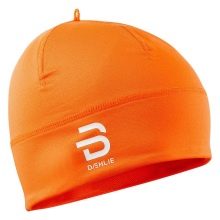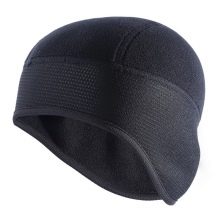All about ski equipment
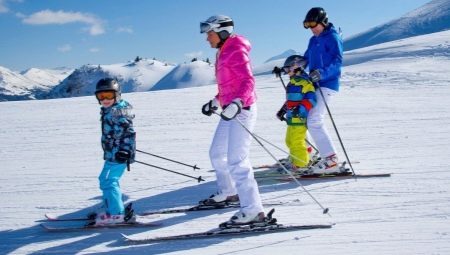
Buying skis is half the battle; for skiing, you also need the right equipment. It is difficult to enjoy skiing when distracted by cold or overheating, irritated by wet clothes. In this article, we will tell you what you need to put on yourself so as not to freeze, move easily and always stay dry. We will tell you how to choose skis, poles, shoes and ski protection.

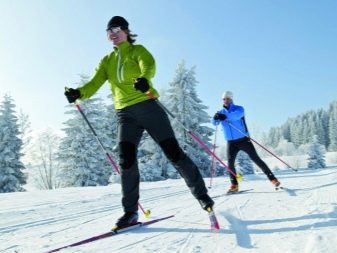
Ski selection
Before choosing skis, you need to know what tasks they have to solve, on what terrain to move. It is clear that different equipment is considered for the beginner and the rider.
Classic
This type of ski is good for those who ski in the park, and not on a specially prepared groomed track. They are chosen for the pleasure of walking with the family. It is better to pay attention to oil-free options, they do not require lubrication, it is convenient to stand on them, communicate in the fresh air.
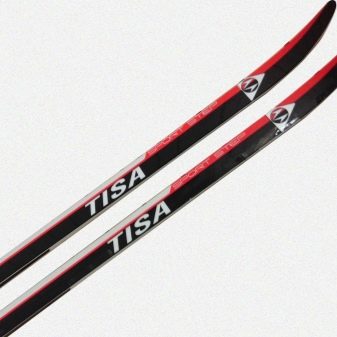
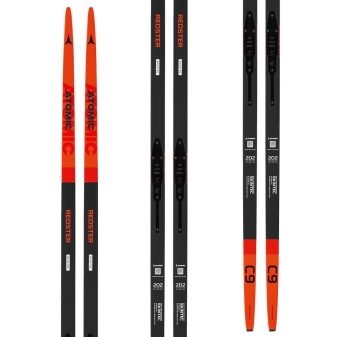
Skating
Ridge course – This is an energy-consuming type of skiing, it is suitable for 2-3 times a week to keep fit. And for a more serious improvement of the skiing technique.

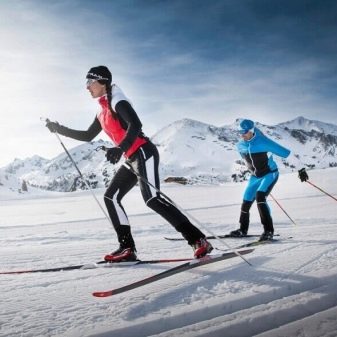
Combined
If you want to have a good time with friends, but sometimes actively ride, you can purchase combination skis, which are an average option.
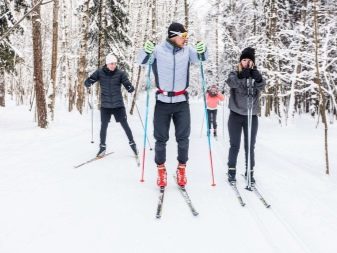
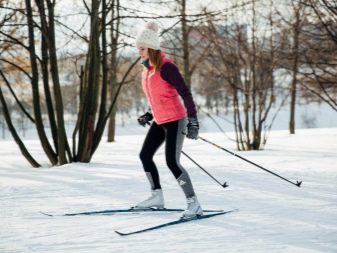
Professional
Sport downhill skis must withstand a high speed load, not let down in flight. To achieve these properties, professional equipment is produced with the greatest length and even geometry. When choosing skis, you should pay attention to the sliding surface, it should be perfectly straight.
It is important that the compression of the pair is the same and even so that there is no damage on the front side, since moisture trapped in the cracks will render the core unusable.
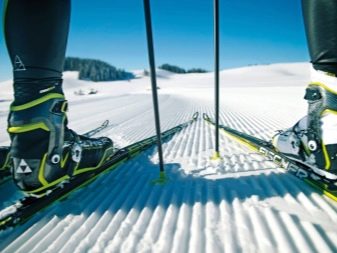
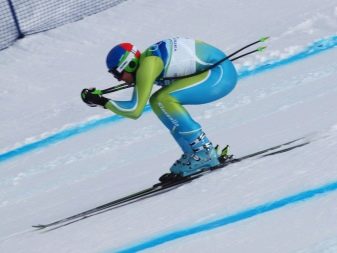
Selection of fasteners
All types of mounts fall into two categories:
- installed on the platform;
- attached directly to the skis.
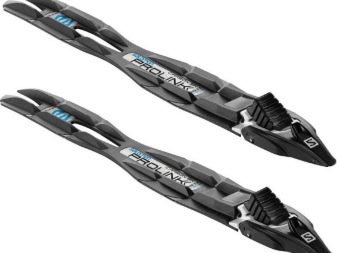
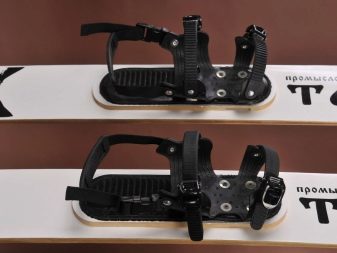
In most cases, ski equipment is included - skis + bindings. In this case, there is no need to be smart. If you still have to buy fixing elements, they should be carefully selected for the size of the shoe and the width of the skis. In addition, you need to pay attention to the difference between mounts for mountain, running and ordinary models for recreation.
The division by type of equipment is as follows.
- Classic. The mounts contain soft shock absorbers (flexors) that do not interfere with the foot.
- Skating. The bindings are equipped with a rigid flexor to hold the ski tightly, preventing it from dangling in the air.
- Combined. The clips are fitted with medium-hardness shock absorbers.
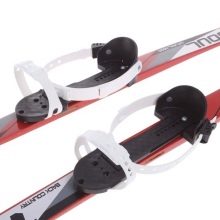
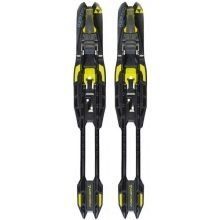
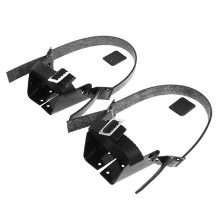
In the bindings for classic skis, which are used for skiing in the park, elastic inserts are often used. In sports models, the locks allow you to accurately adjust the shoe relative to the axis of the skis, in addition, there is a mechanism that makes it possible to quickly move the foot back and forth.
Protection
Skiing is associated with high speeds, is associated with injuries, so professional equipment requires the protection of knees, elbows, shins, back, pelvis and other parts of the body. An entire protective system has been developed for racing.
- Flexible elastic shells of varying degrees of rigidity protect the back during a fall.
- Torso vests have protective plates in the back and chest area.
- For the lower part of the torso, shorts have been developed with special inserts to cushion impacts.
- Overhead protective elements are produced for the elbow and knee joints.
- The gloves are worn with devices that protect the hands from injury.
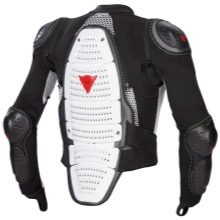
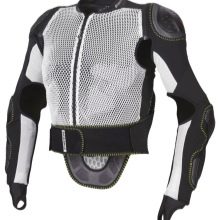

Special mention should be made of equipment that allows you to protect your head and face.
- Helmet. It should sit tightly on the head, but not squeeze it, should cover the ears and forehead, but not interfere with hearing and vision.
- Mask glasses. In order for the view to be not only direct, but also peripheral, you should choose more expensive models with double convex glasses that repeat the shape of the eyeball.
The mask must be correctly matched to the helmet so that the gap in the upper part is minimal, otherwise, when riding at high speed, you may freeze your forehead.

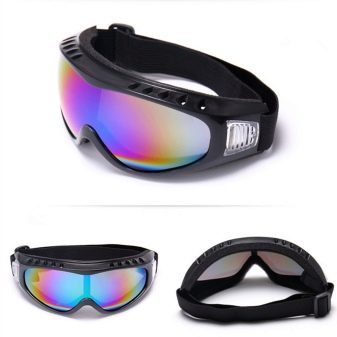
Other elements
Continuing the topic of equipment, we will consider how to choose the right ski poles, boots, gloves and what accessories are needed to maintain ski equipment.
Sticks
They are of different types depending on the purpose.
- Sports. Equipped with a compact support ring. The sticks look like a cone, taper downward. For a good balance of the rider, the product is made in such a way that the load falls on the upper part of the pole, while the lower one remains light.
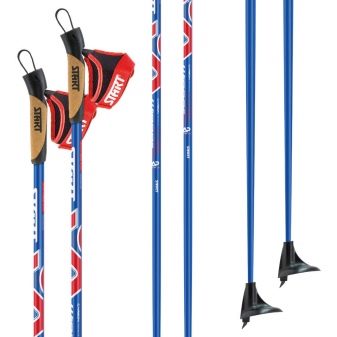
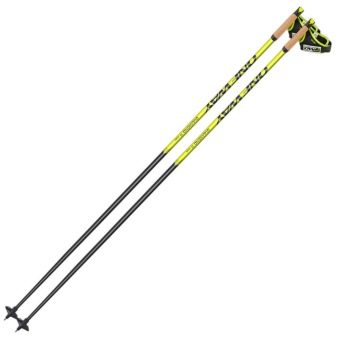
- Tourist. The large support ring is made for rolling on loose snow. The stick is strong, has the same thickness from top to bottom.
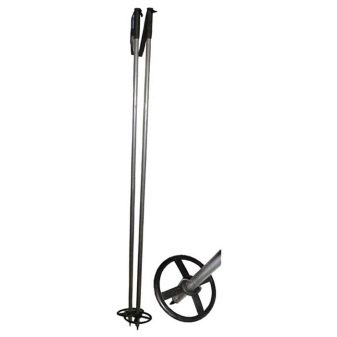
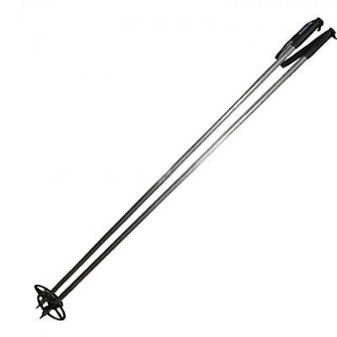
- Ski. Endowed with a telescopic shape. The poles are perfectly adjusted for high-speed ascent and descent.
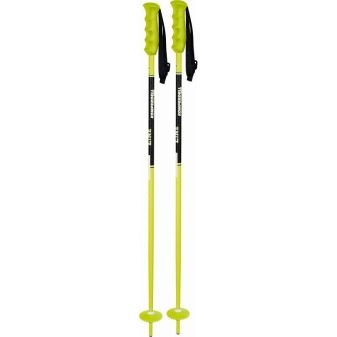
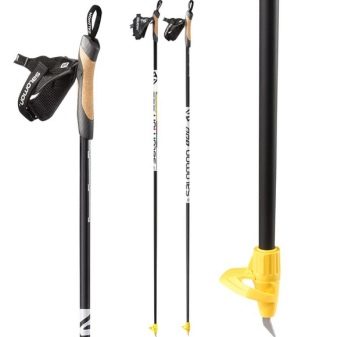
- Cross-country. The products are designed for fast skiing on flat terrain. Sticks are selected according to the type of running.
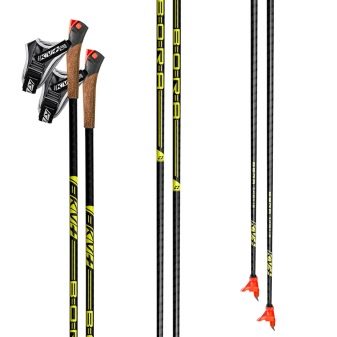
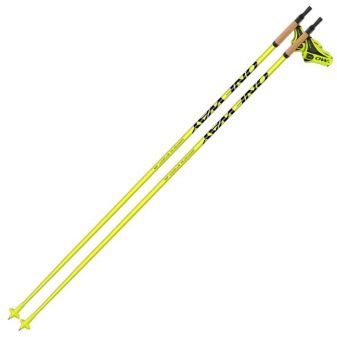
To choose the right length of poles for different types of skiing, you need to subtract a certain number of centimeters from your own height:
- classic - 20-30 cm;
- ridge - 5-15 cm;
- combined - 10-20 cm;
- tourist - 20-30 cm.
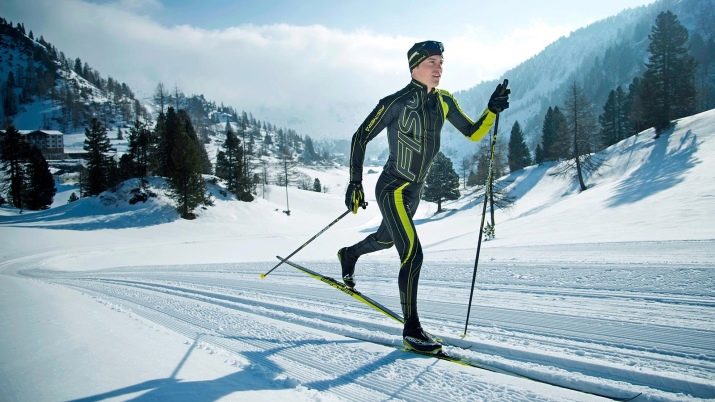
Shoes
Everyone knows how he spends his time skiing. Boots are selected according to the task. This type of footwear has a large assortment and you need to focus on the way you ride. Boots are for:
- classic move;
- ridge;
- combined;
- universal.
Shoes for sports, cross-country skiing, for tourism and walks look different.
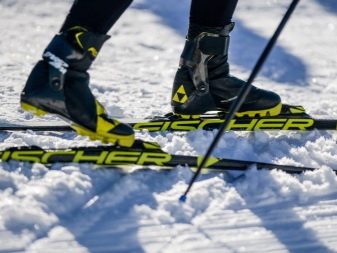

For the classic move
Outwardly, these shoes look like familiar sneakers. It is easy to stand on skis in them, they reduce pressure on the foot and lower leg, the toes have a certain degree of freedom. Boots for the classic ride do not contain special fixators, are endowed with a relatively soft sole and a free top.
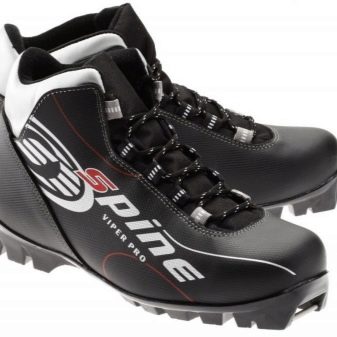
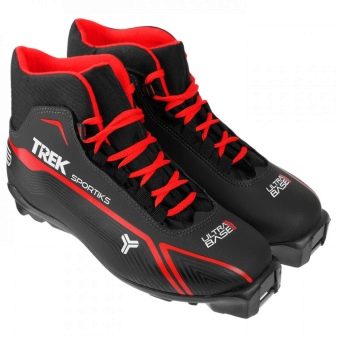
For skating
These models are thought out and calculated for reliable fixation of the foot, they provide minimal load on the lower leg. Skating shoes have a rigid sole and are cut in such a way as to perfectly support the foot. It is these characteristics that allow the boots to "cooperate" with the skis as much as possible at the time of skiing, to clearly control each movement.

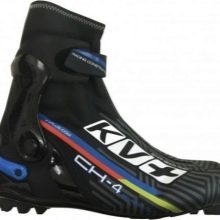
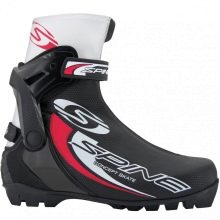
For Sport
Depending on the riding style, shoes with specific fastening devices are selected. Professional boots are characterized by a stable, durable last, a well-fixed upper, and an adjustable cuff.
All this protects the joints, reduces power loads on the muscles, and allows you to control the skis as closely as possible.
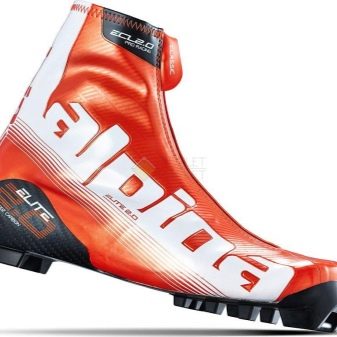
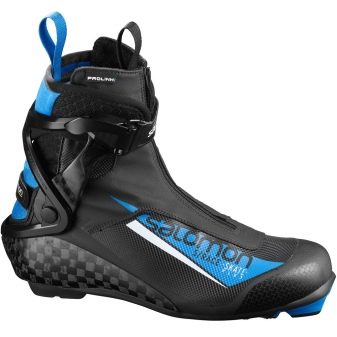
Gloves
Gloves seem like a minor piece of equipment, but a lot really depends on them. Imagine hands constantly slipping off the sticks or stiff hands that are naughty from the frost and do not have proper contact with the supporting part. Will such skating lead to victory?
So, the following types of gloves may be suitable for skiers.
- Classic. Warm models with leather inserts and a special cut. Some species may contain a membrane, be heated.
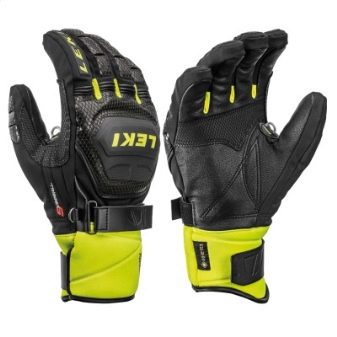
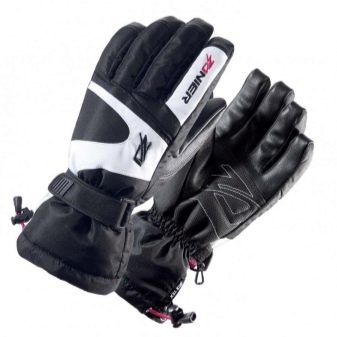
- Sports. Professional ski gloves protected by special elements that help to avoid injuries when touching the slopes with your hand while riding at high speed.
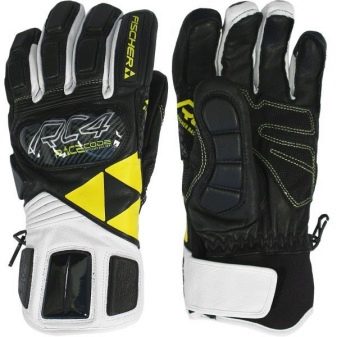
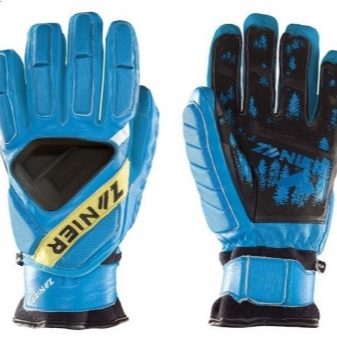
- With protection. Models with wrist guards developed. They are suitable for both skiers and snowboarders.
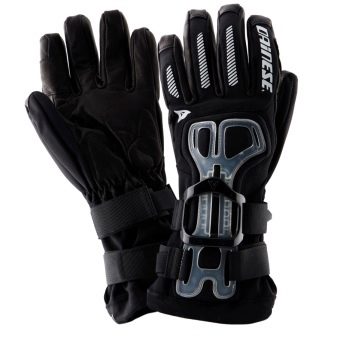
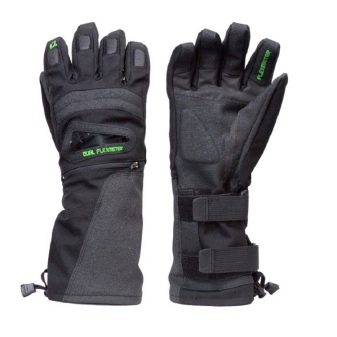
- Universal. Insulated membrane gloves. Designed not only for skiers, but also for any other winter hobby associated with active movements and high speeds.
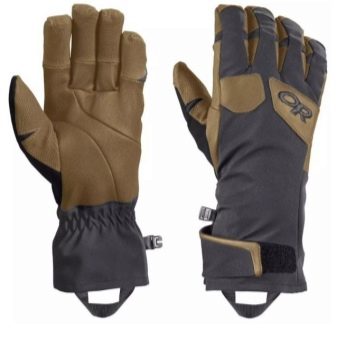
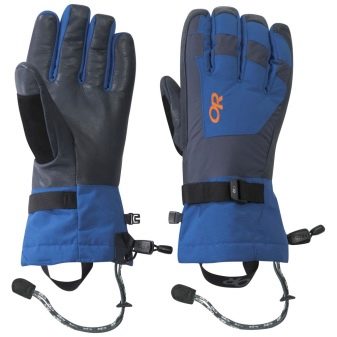
- Softshell gloves. They are suitable for skiing in warm winters, as they are poorly insulated, retain moisture poorly, but have high vapor permeability.
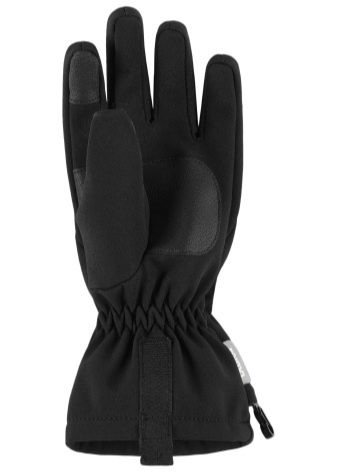
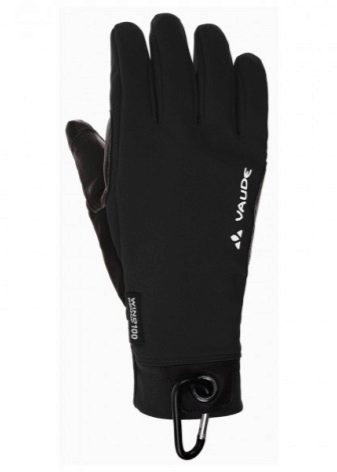
Ski maintenance kits
In addition to the equipment described above, the inventory includes a set of equipment for servicing alpine skiing. In order to prepare the equipment for the ski season, you will need:
- 2-3 rotary brushes;
- fixing vice;
- sharpening for ski edges;
- a scraper to remove excess paraffin;
- iron.
Thanks to the technical kit, it will always be possible to keep the sliding surface and the edges of the skis in order.
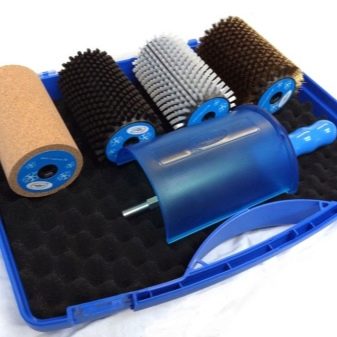

Required clothing
Sports or outdoor activities in frosty weather have their own characteristics. In order not to freeze, not to overheat, not to get wet with sweat, you need to be able to dress correctly. A skier's ammunition can be divided into three component layers:
- thermal underwear;
- light clothing under the jacket:
- outerwear - jacket and pants.
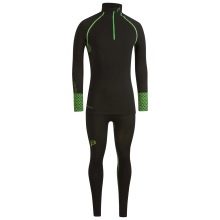
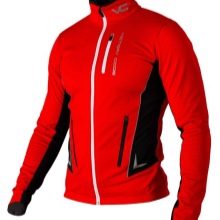

First layer
The first thing a skier puts on is thermal underwear. An exception is not made even in a mild, warm winter, just a light model with short sleeves and cropped pants is selected.
Thanks to the right combination of natural and synthetic fibers, thermal underwear perfectly regulates body temperature, it is neither hot nor cold, sweat is easily absorbed and evaporates quickly, while the underwear always remains dry.

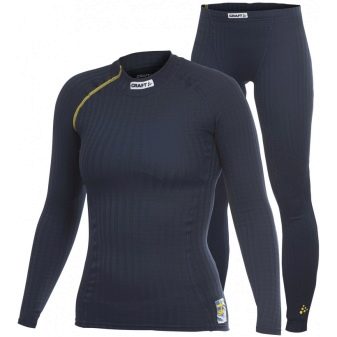
The linen contains flat seams to prevent chafing of the body. To keep warm, the sleeves are complemented with elastic cuffs, and the collar is made high, protecting the throat from bad weather. Models with zippers at the neck allow you to independently adjust the thermal insulation.
In the most expensive thermal underwear, merino wool is used as natural threads, the fibers are woven in several layers and soaked in bactericidal compounds.
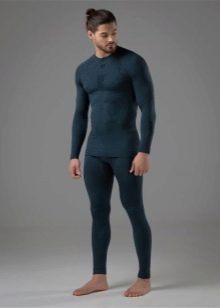
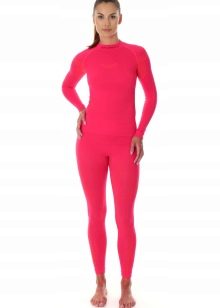
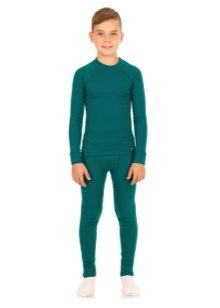
Second layer
The second layer is the clothing that is located between the thermal underwear and the outer warm jacket. It acts as a buffer that retains warm air and does not allow cold air to pass through. For a second layer, recreational skiers can use fleece sweatpants and a sweatshirt.
Professionals have a special tight-fitting elastic ski suit for this purpose. It is made of durable polyester and elastin fibers. Like thermal underwear, it has a high collar and sleeves with lycra cuffs. The suit is equipped with warm inserts in the groin area for protection from the cold and mesh inserts for ventilation of the armpits.
The second layer also includes numerous types of vests, which are worn for additional protection from wind and cold. They are warm, but light and thin at the same time, they can be rolled up and hidden in a backpack or in a bag on the belt, and then used while parking when the body temperature begins to decrease.
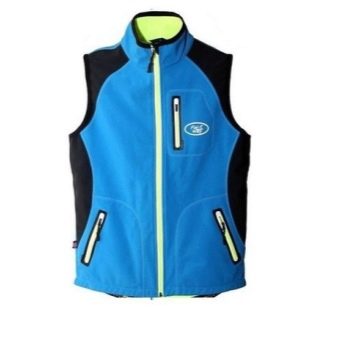
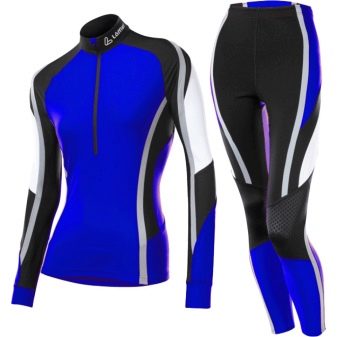
Third layer
The third layer includes warm outerwear - a jacket, pants or overalls. They can be different in the degree of insulation; when choosing clothes, you should be guided by the weather.
On frosty, windy days in the mountains, you need to choose a well-insulated jacket and trousers. But they are suitable for a leisurely ride of amateurs. Athletes should have warm clothes with elaborate quick fasteners, for example, self-release trousers with zippers on the sides, which can be quickly removed just before the start.
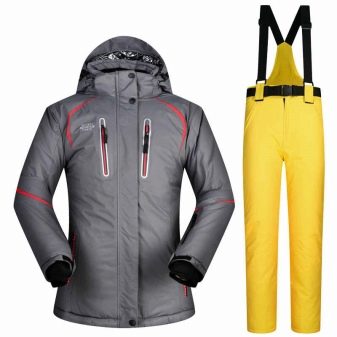
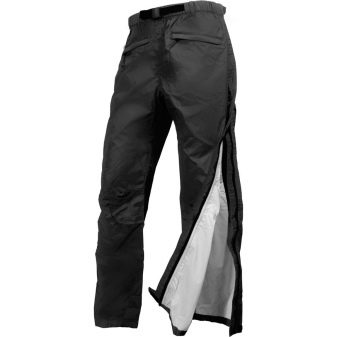
In warm weather, thin windbreakers and pants, suits and overalls are selected. It is necessary to determine as accurately as possible with clothes, avoiding overheating and hypothermia. Besides, models of trousers should be chosen wide, which sit comfortably and do not restrict movement.
The same requirements are imposed on any outerwear for skiing; it must be light, comfortable, waterproof, not blown by the wind, and have good ventilation and thermal control properties. Jackets and trousers are made using membrane fabrics, with inserts of different actions - for insulation, ventilation, from elastic materials in places of bends.
With the help of belts, straps, elastic bands and fasteners, the products adapt to the wearer's figure and prevent snow from getting under the clothes.
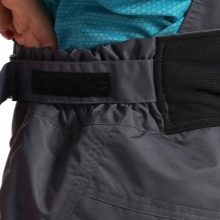
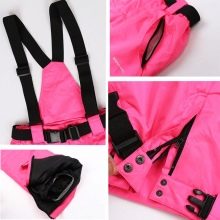

In addition to three-layer equipment, you need to think about warming the head and neck. The following accessories are available for these body parts.
- Buff - the fleece version is used in frosty weather, thin lycra is used on warm days. The buff is worn around the neck or carried over the head under a ski cap to protect the ears.
- Bandana made of cotton fabric and used in warm weather.
- Gater fleece can be used instead of a buff to warm the neck and lower face.
- Balaclava saves in windy weather, covering the neck and ears.
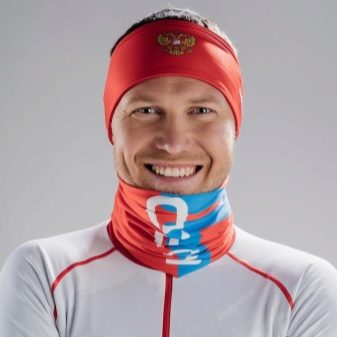
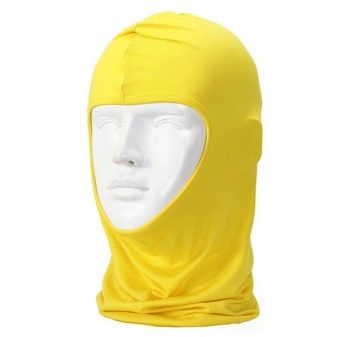
A ski hat should be chosen according to the weather, taking into account its density. Models are produced from fleece, polyamide, polyester with the addition of polyacrylic, a soft cotton insert is lined inside. The hat should be warm, sit comfortably, cover your forehead and ears, not squeeze your head, and not interfere with hearing and vision. At temperatures below minus 10 degrees, a helmet is used in addition to a hat.

